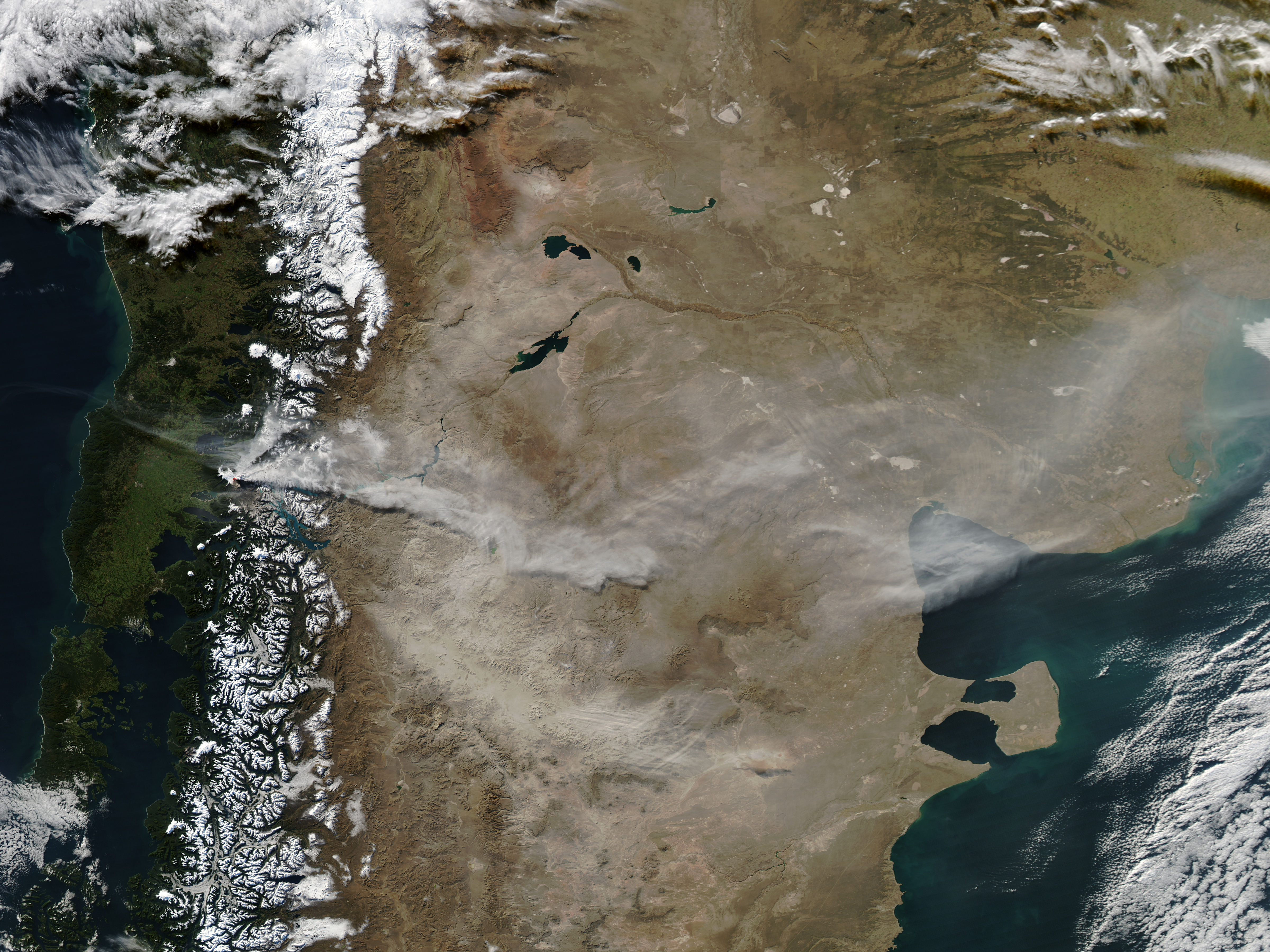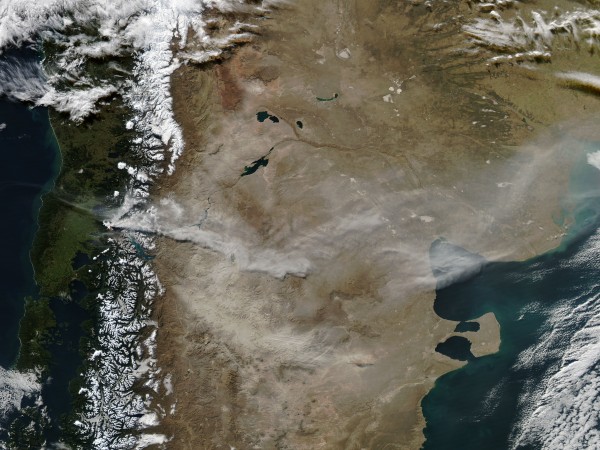Chile’s Puyehue-Cordón Caulle Volcanic Complex eruption persists

As ash from Chile’s Puyehue-Cordón Caulle Volcanic Complex continues to disrupt flights half a world away, the eruption itself persists. The Moderate Resolution Imaging Spectroradiometer (MODIS) aboard the Aqua satellite acquired this natural-color image on June 20, 2011.
At the time this image was captured, a light-colored ash plume extended from the volcano’s caldera to the east, into Argentina. According to the Joint Air Force & Army Weather Information Network the ash rose to an altitude of 27,000 feet (8,200 meters). The location of the eruption site is indicated by a red circular area. Known as a “hotspot”, such a mark indicates that the MODIS instrument detected a thermal anomaly, i.e. an area with a temperature significantly higher than the background.
South of the broad gray ash plume, bright peacock blue waters fill Nahuel Huapi, a large lake in Argentine Patagonia. Light gray streaks can be seen in the water. This is pumice, produced earlier in the eruption, floating on the water.
A black line has been overlain on this image to depict borders. To the west is Chile, and Argentina lies to the east of the borderline. (MODIS)


Commenting rules and guidelines
We value the thoughts and opinions of our readers and welcome healthy discussions on our website. In order to maintain a respectful and positive community, we ask that all commenters follow these rules.